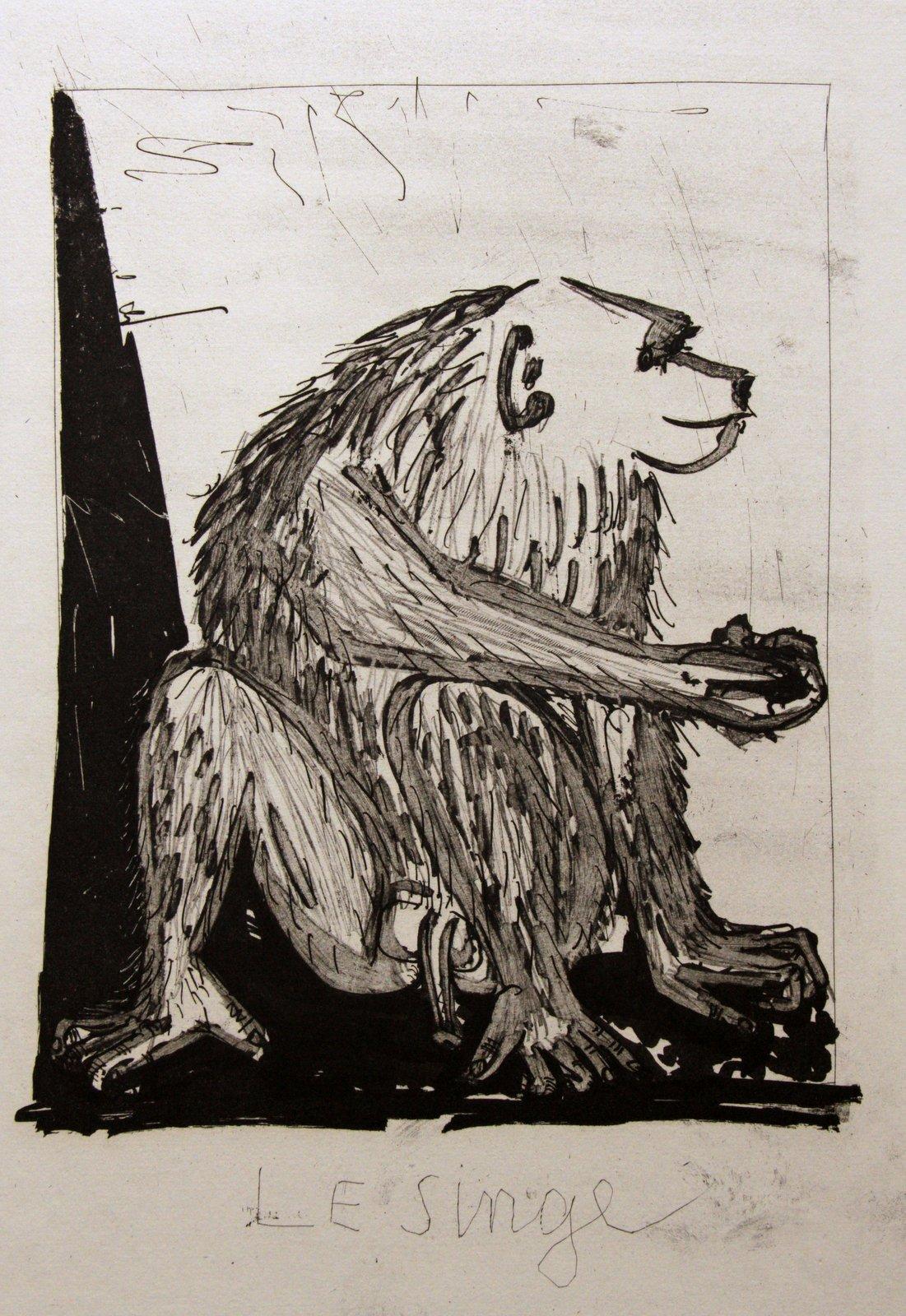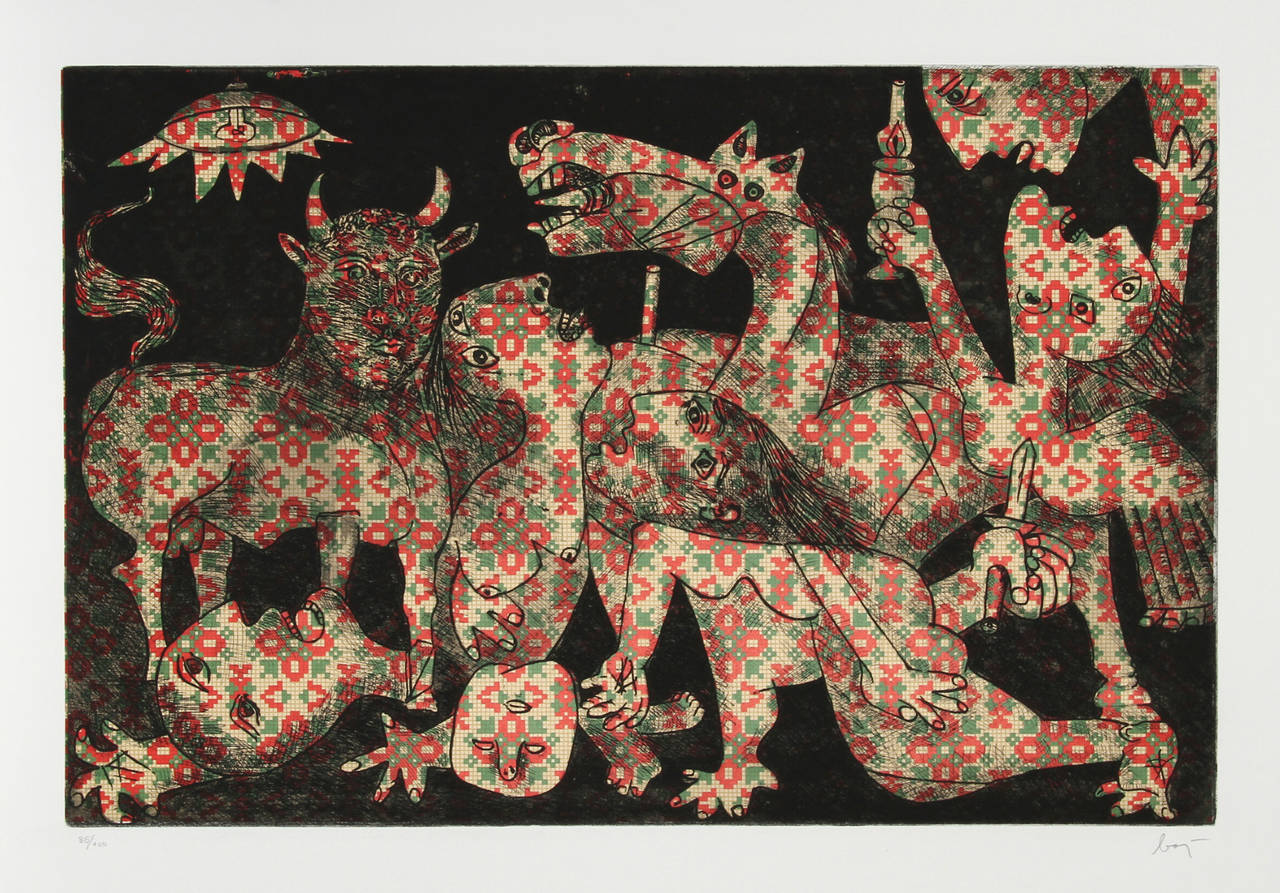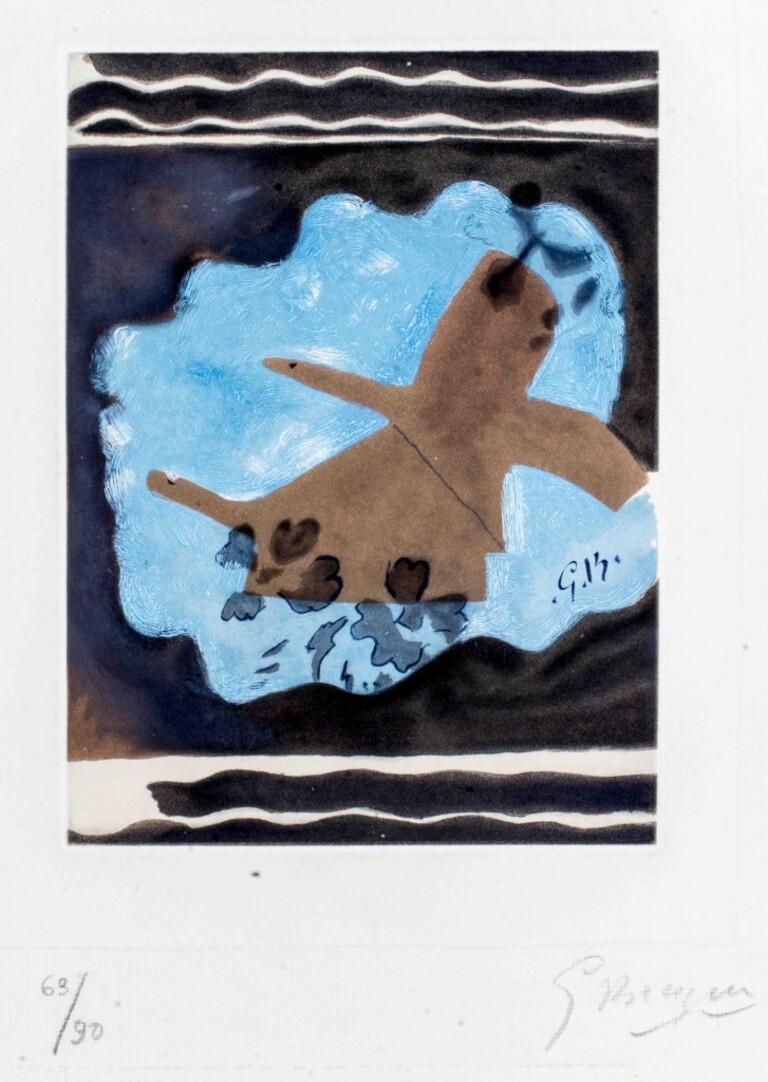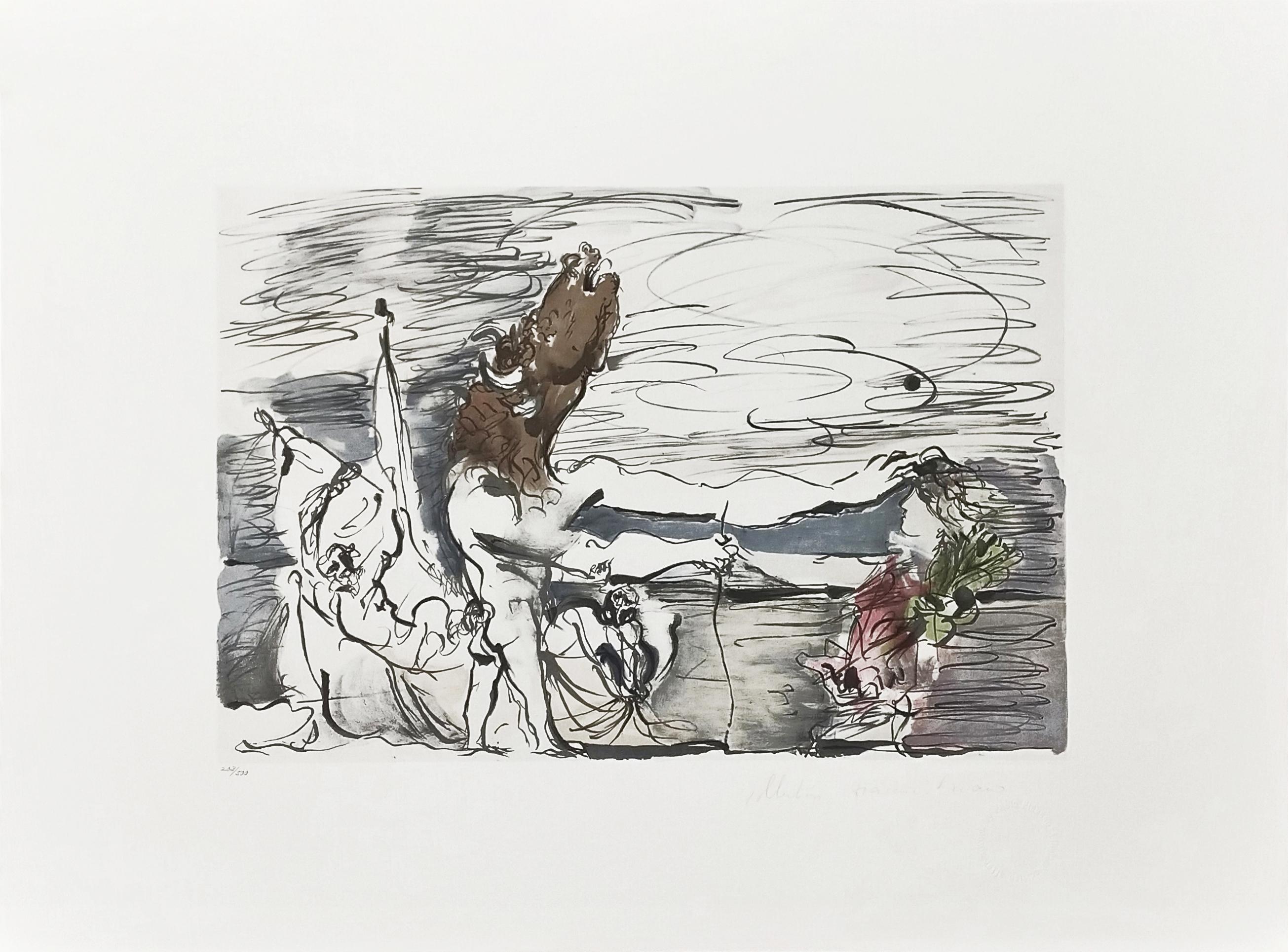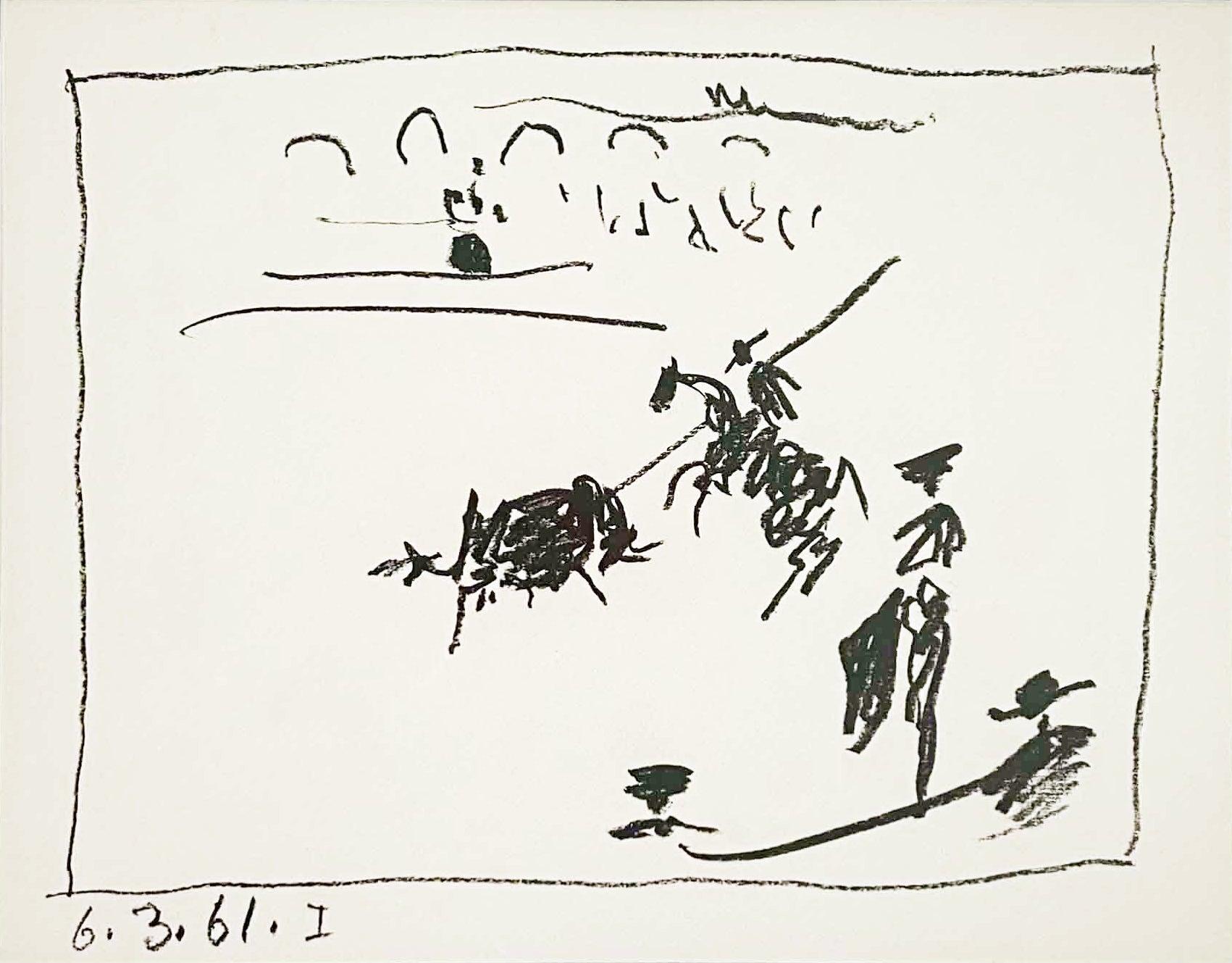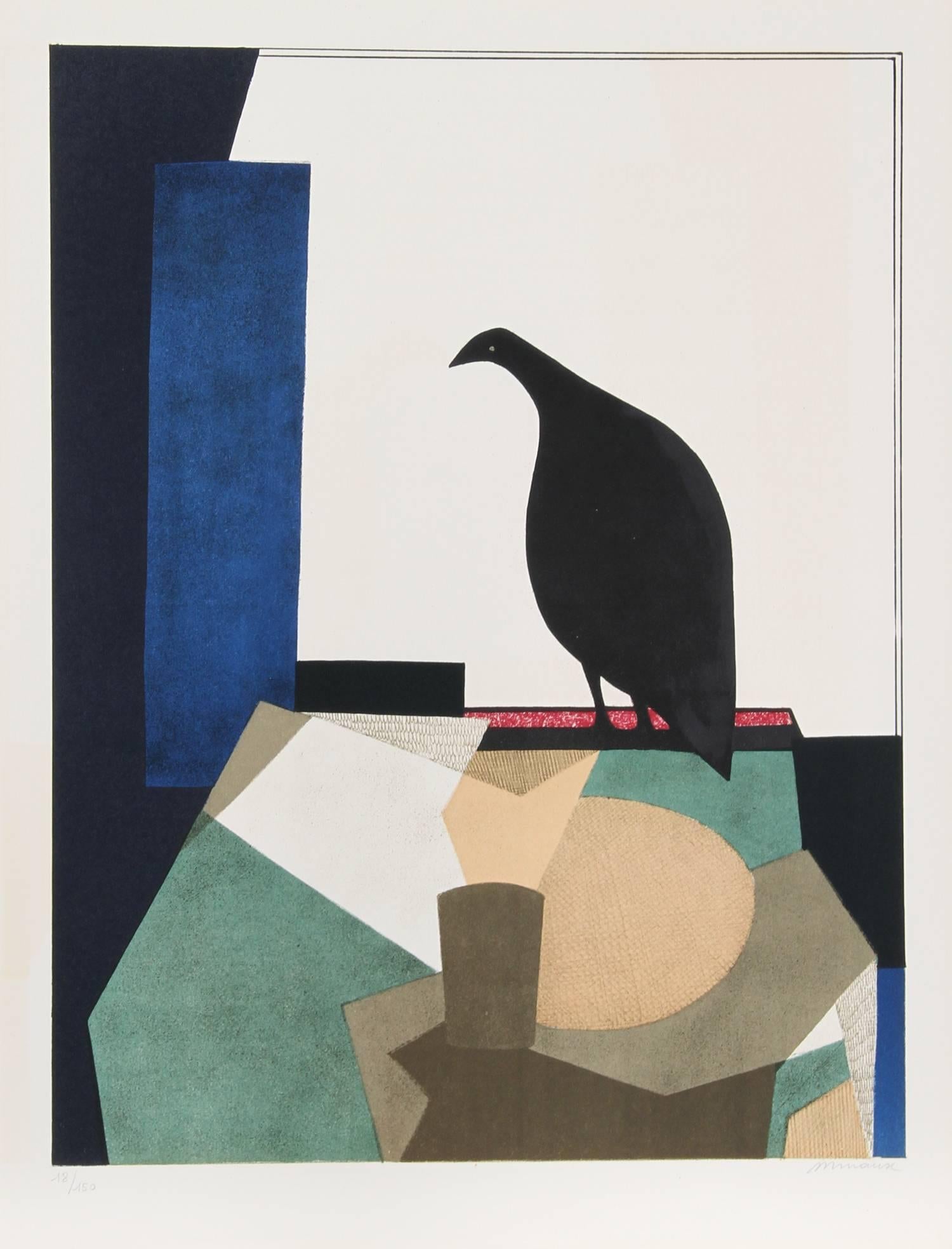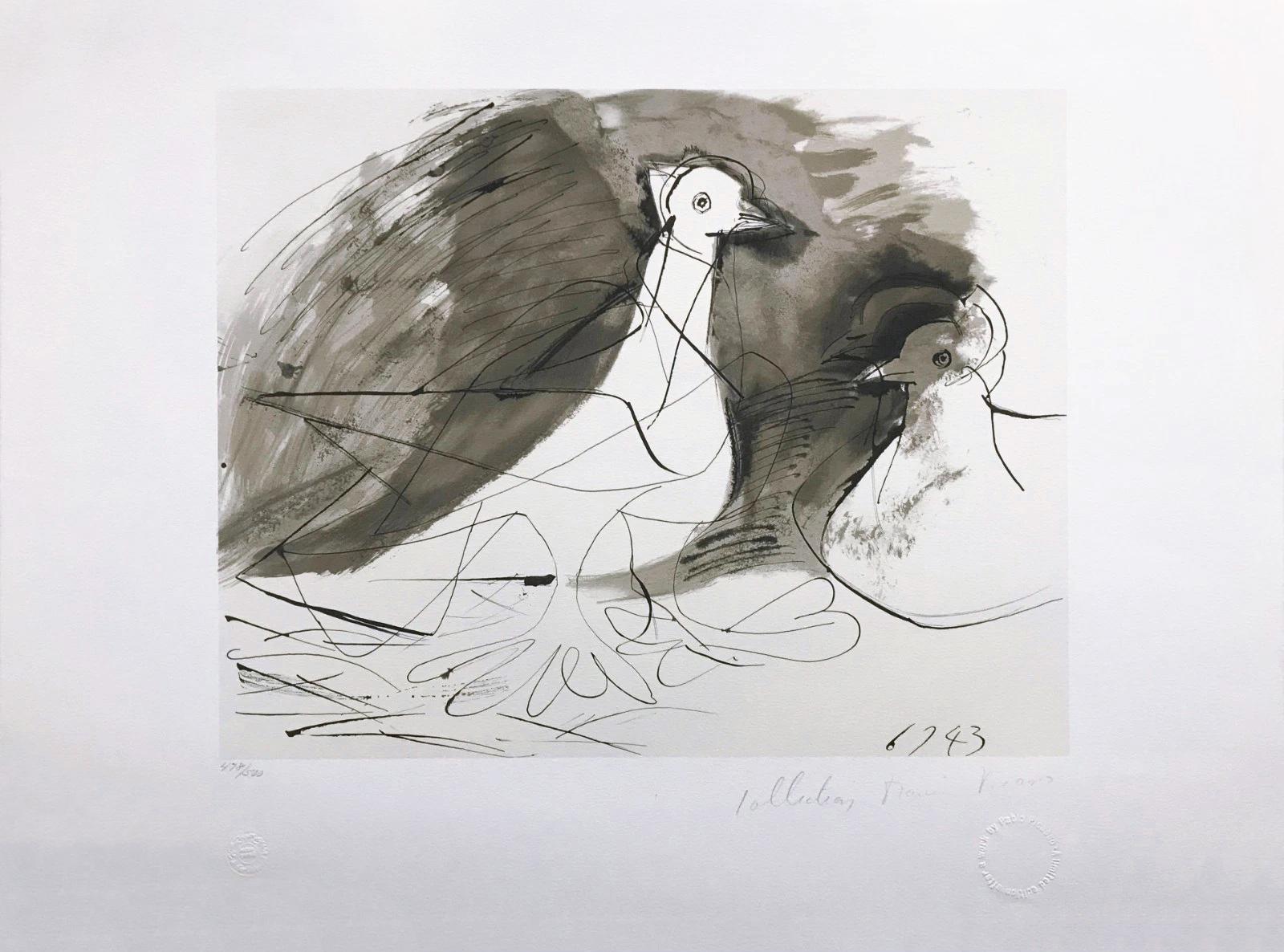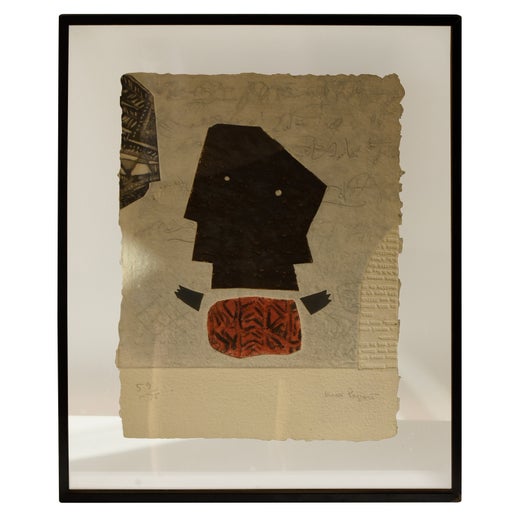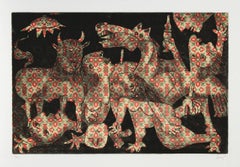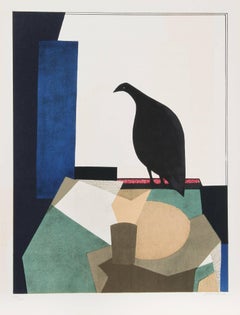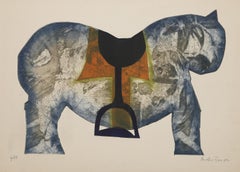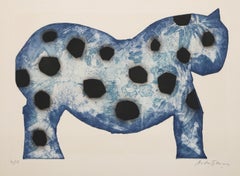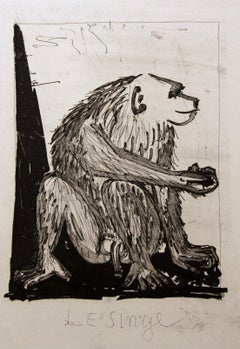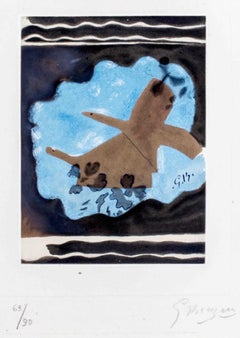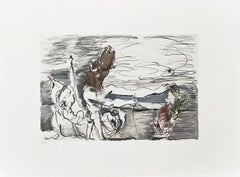Acrobat, Aquatint Etching by Max Papart
View Similar Items
Want more images or videos?
Request additional images or videos from the seller
1 of 6
Max PapartAcrobat, Aquatint Etching by Max Papartcirca 1982
circa 1982
$1,700List Price
About the Item
- Creator:Max Papart (1911 - 1994, French)
- Creation Year:circa 1982
- Dimensions:Height: 30 in (76.2 cm)Width: 42 in (106.68 cm)
- Medium:
- Movement & Style:
- Period:
- Framing:Framing Options Available
- Condition:
- Gallery Location:Long Island City, NY
- Reference Number:1stDibs: LU4666625792
Max Papart
Max Papart (1911-1994), was born in Marseille, France and later moved to Paris where he learned the techniques of classic engraving. One of the most intriguing intellectual concepts which Papart achieved is a "window" through which the viewer senses the past or future, or even another time or place. It has been said that Papart does not "paint," he "composes." His compositions come together in a symphony of line, shape and colour. Papart always believed that each painting has its own meaning and needed no interpretation from him. His paintings, in his own words, 'force the viewer to think, and it is for the viewer to respond to the art based on his own personal experiences (Rogallery). Papart's original art pieces such as this one are auctioned at the world's most prominent houses and are eminently collectible. You will find his works often sold side-by-side with Picassos, Chagals and Braques.
About the Seller
4.9
Platinum Seller
Premium sellers with a 4.7+ rating and 24-hour response times
Established in 1979
1stDibs seller since 2014
3,048 sales on 1stDibs
Typical response time: 1 hour
Authenticity Guarantee
In the unlikely event there’s an issue with an item’s authenticity, contact us within 1 year for a full refund. DetailsMoney-Back Guarantee
If your item is not as described, is damaged in transit, or does not arrive, contact us within 7 days for a full refund. Details24-Hour Cancellation
You have a 24-hour grace period in which to reconsider your purchase, with no questions asked.Vetted Professional Sellers
Our world-class sellers must adhere to strict standards for service and quality, maintaining the integrity of our listings.Price-Match Guarantee
If you find that a seller listed the same item for a lower price elsewhere, we’ll match it.Trusted Global Delivery
Our best-in-class carrier network provides specialized shipping options worldwide, including custom delivery.More From This Seller
View AllBaj Chez Picasso 2, Aquatint Etching by Enrico Baj
By Enrico Baj
Located in Long Island City, NY
Artist: Enrico Baj, Italian (1924 - 2003)
Title: Baj Chez Picasso 2
Year: 1969
Medium: Aquatint Etching, Signed and numbered in pencil
Edition: 86/100
Image Size: 15 x 22 inches...
Category
1960s Cubist Animal Prints
Materials
Etching, Aquatint
"Amour from the Helene Portfolio" Lithograph by Andre Minaux
By Andre Minaux
Located in Long Island City, NY
Artist: Andre Minaux, French (1923 - 1986)
Title: Amour from the Helene Portfolio
Year: 1974
Medium: Lithograph, signed and numbered in pencil
Edition: 150, XXX
Size: 25.75 in. x 19....
Category
1970s Cubist Animal Prints
Materials
Lithograph
Cheval jaune et bleu, Modern Etching and Aquatint by Andre Francois
By André François
Located in Long Island City, NY
Andre Francois, Hungarian (1915 - 2005) - Cheval jaune et bleu, Year: circa 1960, Medium: Etching and Aquatint on Arches, signed and numbered in pencil, Edition: 6/50, Image Size:...
Category
1960s Modern Animal Prints
Materials
Etching, Aquatint
Cheval Bleu, Modern Etching and Aquatint by Andre Francois
By André François
Located in Long Island City, NY
Andre Francois, Hungarian (1915 - 2005) - Cheval Bleu, Year: circa 1960, Medium: Etching and Aquatint on Arches, signed and numbered in pencil, Edition: 7/50, Image Size: 15.5 x ...
Category
1960s Modern Animal Prints
Materials
Etching, Aquatint
Cheval Noir, Modern Etching and Aquatint by Andre Francois
By André François
Located in Long Island City, NY
Andre Francois, Hungarian (1915 - 2005) - Cheval Noir, Year: circa 1960, Medium: Etching and Aquatint on Arches, signed and numbered in pencil, Edition: 6/50, Image Size: 15.5 x ...
Category
1960s Modern Animal Prints
Materials
Etching, Aquatint
Cheval, Modern Etching and Aquatint by Andre Francois
By André François
Located in Long Island City, NY
Andre Francois, Hungarian (1915 - 2005) - Cheval, Year: circa 1960, Medium: Etching and Aquatint on Arches, signed and numbered in pencil, Edition: 7/50, Image Size: 15.5 x 22.5 ...
Category
1960s Modern Animal Prints
Materials
Etching, Aquatint
You May Also Like
Le Singe - Etching by Pablo Picasso - 1940s
By Pablo Picasso
Located in Roma, IT
Etching, aquatint and drypoint. Not Signed and not Numbered as issued.
Edition of 226 pieces.
Belongs to the Suite "Histoire Naturelle de Buffon" (plate p. 86).
Printed by Lacourièr...
Category
1940s Cubist Figurative Prints
Materials
Paper, Etching, Drypoint, Aquatint
Head of a Bull (Plate XXXII), from Carmen
By Pablo Picasso
Located in Washington, DC
Artist: Pablo Picasso
Title: Head of a Bull (Plate XXXII)
Portfolio: Carmen
Medium: Etching on Montval wove paper
Year: 1949
Edition: 289
Sheet Size: 13" x 10 3/16"
Signed: No (signe...
Category
1940s Cubist Animal Prints
Materials
Etching
Migration - Etching by Georges Braque - 1962
By Georges Braque
Located in Roma, IT
" Migration " is an etching realized by Georges Braque in 1962. The print is hand signed and numbered. This is an edition of 90 prints.
Bibliography: D. Vallier, Braque : l'oeuvre gravé: catalogue raisonné , Flammarion, Paris 1982, p.241, n.72.
Georges Braque (1882-1963) was a French Fauve painter who began to rethink his own painting style after admiring Picasso’s Les Demoiselles...
Category
1960s Cubist Animal Prints
Materials
Etching
MINOTAURE AVEUGLE CONDUIT PAR UNE PETITE FILLE
By (after) Pablo Picasso
Located in Aventura, FL
Selected from the personal collection inherited by Marina Picasso, Pablo Picasso's granddaughter. After Pablo Picasso's death, his granddaughter Marina authorized the printing of t...
Category
1980s Cubist Animal Prints
Materials
Paper, Lithograph
$1,025 Sale Price
50% Off
La Pique (I), from A Los Toros Avec Picasso
By Pablo Picasso
Located in Washington, DC
Artist: Pablo Picasso
Title: La Pique (I)
Portfolio: A Los Toros Avec Picasso
Medium: Transfer lithograph
Date: 1961
Edition: Unnumbered
Frame Size: 18 1/4" x 20 3/4"
Sheet Size: 9 1...
Category
1960s Cubist Animal Prints
Materials
Lithograph
La Fille aux Oies
By Jean-Emile Laboureur
Located in New York, NY
Jean-Emile Laboureur (1877-1943), La Fille aux Oies, engraving, 1916, signed in pencil lower left, numbered (4/40) lower right and inscribed “imp,” also titled lower left margin edge...
Category
1910s Cubist Figurative Prints
Materials
Engraving
Recently Viewed
View AllRead More
Romare Bearden’s Humanity Infuses His Bright, Bold Art
Through collage, painting and printmaking, the artist foregrounded Black life in America in revolutionary new ways.
Chryssa’s 1962 Neon Sculpture Was Way ahead of the Art-World Curve
By working with lettering, neon and Pop imagery, Chryssa pioneered several postmodern themes at a time when most male artists detested commercial mediums.
